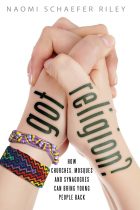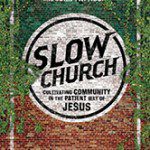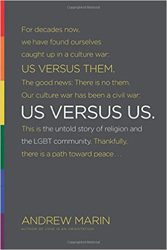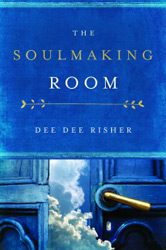 As the pastor of a mid-sized congregation, South Congregational Church, United Church of Christ, on Cape Cod, I am as perplexed as most of my colleagues about how to reach out to twenty and thirty-year-olds in our community. With the exception of the children of long-time members or persons planning to get married at our church, members of the millennial generation seldom darken our doors.
As the pastor of a mid-sized congregation, South Congregational Church, United Church of Christ, on Cape Cod, I am as perplexed as most of my colleagues about how to reach out to twenty and thirty-year-olds in our community. With the exception of the children of long-time members or persons planning to get married at our church, members of the millennial generation seldom darken our doors.
A recent article in a local magazine described the apparently successful outreach to millennials of the Cape’s largest Protestant congregation, noting their high-tech sound system, coffee house, bookstore, and dynamic praise band. Although we have a wonderful coffee hour, solid local outreach, and great hospitality, our traditional white-steeple church with its great music program, inspiring worship, and insightful offerings for children can’t technologically compete; we seldom are able to get millennials in the door! Our growth has been primarily among recently-retired baby boomers and forty-something couples with children.
I appreciate the technological gifts of full-service, big box churches, but I am uncertain that our congregation needs or wants a jumbotron or praise band in worship. What we do need and want is to discern our vocation in responding to the diverse needs of the millennial generation. We recognize that while general statements can be made about persons in their twenties and thirties, each person is unique, and responds to the calls of God in unique and personal ways. No one size fits all, nor does one congregation respond to all the needs of persons in any age group. For example, recently a thirty-year-old told me that he finds praise music superficial and noisy and prefers a more traditional meditative service. Another millennial in her late twenties noted: “I like the familiar hymns of my home church [a United Church of Christ congregation in New York]. They give me a sense of peace and calm, not like the raucous praise music of the big churches.” Still, another mid-thirties seeker said, “My life is filled with technology. I need time to slow down and simply listen. I want a church that provides opportunities for silence and prayer.”
Our church offers all of these – familiar hymns, blended worship, prayer and meditation groups, solid preaching, and a slower pace than the digital world. Our challenge is to find new ways to share God’s good news, embodied in our community. We aren’t judging other congregations and their gifts, but need to let our light shine. We know that many millennials see the church as anti-science, homophobic, intolerant of other faiths, moralistic, exclusionary, and politically conservative. None of these apply to our middle of the road, politically and theologically diverse congregation, whose members enjoy watching Neil deGrasse Tyson’s “Cosmos,” welcome gay and lesbian couples and weddings, discuss Buddhist meditation, teach reiki, sponsor Christian yoga gatherings, and affirm seekers.
How do we help persons in the millennial generation to get to know the way of Jesus again for the first time? How do we enable them to discover that our doors and hearts are open to them wherever they are on life’s journey?
For me, the new book by journalist Naomi Schaefer Riley Got Religion? raises as many questions as answers and I wish I had answers that would guarantee our congregation’s success in reaching out to the millennial generation. We are still finding our way. As I read Riley’s text, I reflect on our challenges in these areas:
- Being a church that is open to questions and alternatives that does not add to the decision fatigue of many millennials, in contrast to the clear advice given by conservative congregations.
- Becoming a place whose understanding of time and place as both stable and creative, slow and purposive, is an alternative to the fast pace characteristic of much of the millennial generation.
- Becoming a possibility that millennials will even consider as they ponder their spiritual journeys. In other words, how does (in our case) a two hundred year, white steeple church, share authentically its good news as a place of healing, complementary medicine, spiritual practice, and hospitality in ways that millenials will even notice. How do we communicate in such a way that we’re even noticed in the larger panorama of spiritual possibilities?
We are on a path to discovering the place where our gifts can best meet the deepest spiritual needs of persons in their twenties and thirties. I conclude, in concert with a host of other pastors with whom I converse, with a call to further conversation and sharing of what has been most welcoming in your congregation and where your congregation’s gifts have touched the spiritual needs of young adults. Let us share our insights and inspirations with one another to expand our mission as people of good news to the world.
Read an excerpt from Got Religion? – and an author Q&A – at the Patheos Book Club here.













